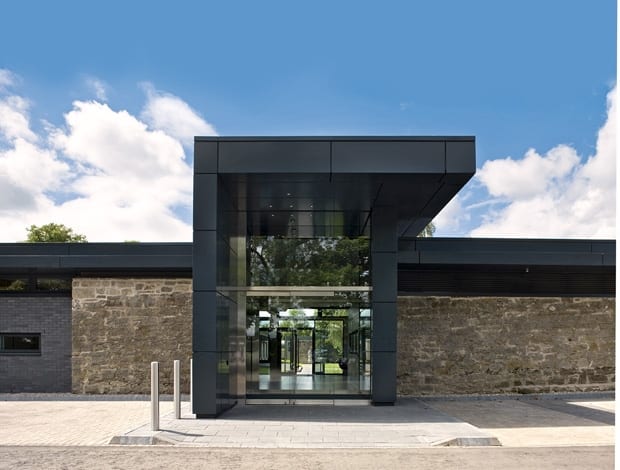Scotstoun House, Edinburgh, Scotland, UK
Architects: HAA Design
Client: Arup Scotland Limited
Services: Scheme Design and Detailed Design for the fit-out
Location: Edinburgh, Scotland, UK
Awards: British Council for Offices Refurbished / Recycled Workplace Regional Award and National Award 2011 Edinburgh Architectural Association Award 2011 2011 Scottish Design Awards - Sustainable Design category RIBA Award 2011 Roses Design Award 2011– sustainable design
An award-winning office refurbishment and extension project all to the highest possible standards in quality, sustainability, energy efficiency and environmental sensitivity. Arup Scotland commissioned HAA Design to look closely at their business, how they wanted to work, what the business might look like in 20 or 30 years’ time, and to look at how future needs could be met with their existing site and building. The principal contract works refurbishing and extending the existing B-listed 1960’s precast concrete frame building, set within the historic walled garden at Scotstoun House, included blown/bubble feature finish precast concrete columns to match the existing listed concrete wall panels exactly; salvaged pitch pine timber flooring and ceiling linings; SUDS harvesting, attenuation and recycling of surface water in reed beds, berms and swales; wood pellet Bio-mass boiler heating and state-of-the-art building energy management system control to formed new closed cell offices, open plan working spaces, meeting rooms, kitchens and dining areas, toilets, circulation and ancillary spaces all per Historic Scotland requirements with an absolute condition on protecting, supporting and enhancing the surrounding environment. Materials were selected on the basis of a Green Guide A rating. Natural, inert and recyclable materials were used throughout. The tone of the existing building was reflected in the choice of concrete, timber, steel and glass as the primary materials used in the new extension. A new aluminium capping to the old building is mirrored in the extension and in the choice of aluminium for the new windows, creating strong lines in a soft parkland setting. Lead was the one new material introduced, chosen as a softer material to tie in with the blue engineering brick on the exterior fringe to the old building. The project was awarded BREEAM ‘excellent’ rating on design, construction, analysis and audit. The acoustic design supported the design intent to achieve BREEAM excellent rating and the sustainable targets including natural ventilation. In addition, the acoustic input together with the levels of lighting, heating and cooling helped providing a working environment conducive to much greater productivity. Therefore, the envelope and internal sound insulation has been looked to be in line with the above targets and to ensure the level of comfort and the needs of the users. Working with the type of materials selected and the architectural intents, the room acoustics within the spaces have been controlled to achieve a level of quietness and calmness in favor of concentration and productivity. With respect of the ventilation and cooling parameters the acoustic design worked towards the achievement of the suitable level of background noise within the spaces through the control of building services noise.





